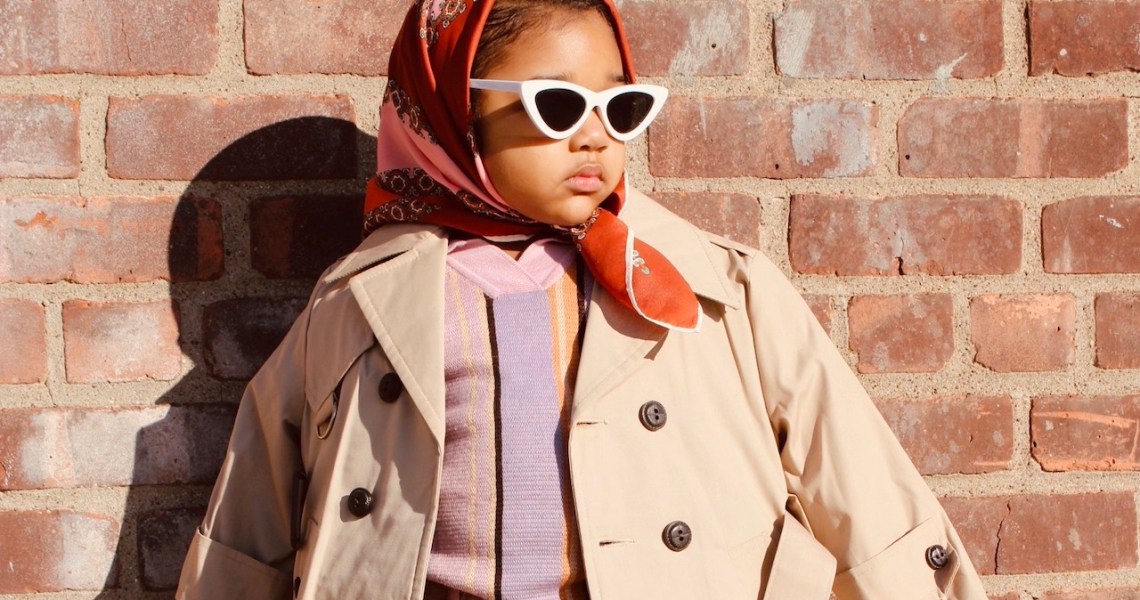The pandemic damaged the traditional wholesale relationship between brands and retailers. Brands felt burned by canceled orders from retailers early on, and many pivoted to focus on direct sales. Meanwhile, retailers struggled with burdensome inventory that was hard to sell.
But DTC can only take brands so far, and recently, platforms that don’t rely on the wholesale exchange of inventory have been growing. That includes 4-year-old Dopple, a childrenswear-focused subscription box company with a business model similar to Stitch Fix.
In 2020, the company’s revenue was five-times higher than in 2018. And Dopple completed a seed funding round at the beginning of April led by Bullpen Capital for a reported $9.5 million. It was the company’s first outside funding. In the last year, the brand has added more than 50 new brands, for a total of 200, from kids-focused companies like Janie & Jack to high-end fashion brands including Stella McCartney, Chloé and Versace.
Chao Wang, founder and CEO of Dopple, attributed the company’s growth and interest from reputable brands to the company’s consignment model and the decline in traditional wholesale retail. As for the consignment model, rather than buy inventory from brands, Dopple takes a percentage of each sale that varies depending on the brand.
“As we’ve built the business, we’ve been talking to old-school luxury brands, Instagram-native DTC brands and everyone in between. They all have the same challenges: They want to move excess inventory, as well as acquire customers and get them to keep coming back,” Wang said. “So we’ve built this with the idea that the brands are our customers, too.”
Dopple’s consumer-facing model is similar to other try-before-you-buy boxes, where customers get a box of clothes that’s curated based on a questionnaire they take online. They can keep and pay for clothes they like, and return ones the styles they don’t. Dopple products can be bought à la carte at any time, but Wang said sales made via boxes are higher.
The consignment model is unique among subscription boxes. Stitch Fix, despite a similar box setup, is actually built on a wholesale model. And popular marketplaces like Farfetch are different, as they don’t take possession of inventory, while Dopple does. The model is more common among resellers like ThredUp.
Wang said most brands are looking for four things from a partner: revenue, customer acquisition, data and what she called “commerce as a service.” She said that Dopple and similar consignment-based platforms solve for all four needs — often better than traditional retailers. Dopple’s consignment model pays brands at the end of each month for sold products (which are only discounted the brand approves), gets product into customers’ hands to try before they buy (which overcomes a customer acquisition hurdle for e-commerce brands) and provides data aggregated from hundreds of brands on what is selling and to which demographics.
“The last and most important piece is commerce as a service,” Wang said. “It’s the idea that we are the vehicle for brands to sell their products. We can move their [inventory] at full price, or they can price it higher or lower depending on how fast they want it to sell.”
Janel Molton Hertz, co-founder of Dopple, is in charge of the brand’s marketing and said the company has been holding back on marketing in its first few years while establishing a stable of high-end brands. But more advertising through social ads is on the way, he said.
Ann Lai, general partner of Bullpen Capital who led the round, called platforms like Dopple that sidestep traditional wholesale relationships “the future of retail.” Bullpen has invested in a wide variety of companies over its 10 years of life, but has mostly favored beauty and wellness brands, like Ipsy and Grove Collaborative, over fashion.
The growth that Dopple has seen is a sign that, even though direct-to-consumer sales have become a major focus for brands, there are certain things they still need partners for. With third-party cookies soon to be no more, brands are looking for alternative sources of customer data, and third-party retail partners can help. While direct is still a better source of data, the loss of cookies means data provided by retailers — when they offer it — is appealing. Wang said Dopple has been free with sharing a large amount of data with brands for that reason.
Secondly, consignment retailers can help brands find an audience for products that aren’t moving via direct channels. For example, M.M.LaFleur is using its retail partnership with Zappos to help revitalize sales of its plus-size clothing, which was flagging through the brand’s direct channels. And more than 30 brands have used data from Stitch Fix to launch or invest more heavily in plus-size clothes after seeing success selling the category through Stitch Fix boxes.
Hertz said that Dopple’s sole focus on kid’s clothing means that brands with only have a small selection of children’s clothing can get the product in front of customers shopping the category.
“We have a lot of kids-focused brands, but also some of them are just testing into the category — most are traditional brands that are noticing sales of kids’ clothes are growing super fast. With luxury and boutique brands alike, there’s a lot of interest,” Hertz said.
Children’s fashion has grown from a $203 billion market in 2017 to $252 billion in 2020. It’s expected to be valued at $339 billion by 2024.




